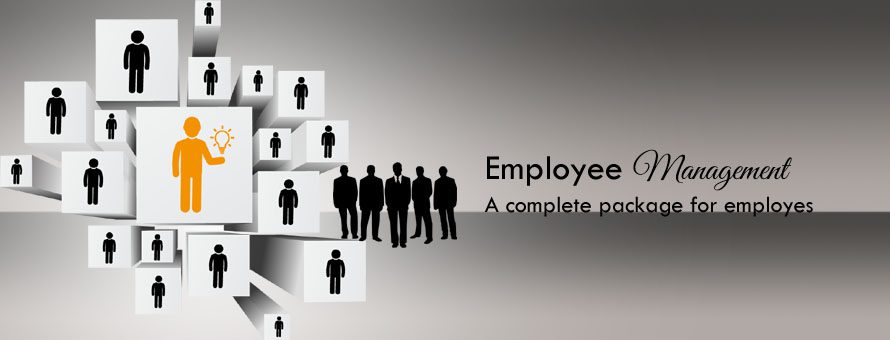Employees form the most important constituent of an organization. Without people there can be no activities in a business. Even to run a computer or start a machine or manage a server, a business needs people. Conventionally, HR was considered as a part of administration.
Gradually, HR was started to be recognized as a separate specialized function of management. And over the last two decades, the nature and role of HR in an organization has undergone continental shifts. Today, HR stands integrated with the strategic objectives of an organization and its various other functions. It has become an imperative for organizations to have in place effective and efficient people management systems and processes so that HR can serve as a strategic platform towards the fulfillment of organizational and other functional objectives. The following points highlight the significance of effective and efficient human resource management in an organization –
1. Building and sustaining a strong organization culture
Employees are instrumental in giving the desired shape to an organization culture. A good and strong organization culture is home to productivity, commitment and hard work. It also attracts skilled manpower, enhances job satisfaction and serves as a morale booster for employees. Presence of a pervasively productive work culture indicates higher chances of achieving organizational goals. The foundation of a strong organization culture begins with HR policies which lay emphasis not just on performance and productivity but also on people. HR policies should clearly define all the rules and regulations which an employee is required to make use of as a part of the organization.
2. Address resource implications
The wages and salaries of employees in an organization contribute to around 80 percent of the total cost of a business. This makes HR a very crucial function for an organization from financial perspective. However, most small and medium scale business enterprises do not have a separate HR department or HR staff to take care of their HR processes. On the other hand, establishing the HR base can be a very time consuming process and very often these businesses cannot devote enough time or lack the professional expertise in managing their HR processes. Considering the huge financial involvement and resource constraints for staff management, business enterprises turn to professional HR consulting solutions from the outside to streamline and manage their HR processes.
3. Adherence to processes and procedures
The success of any business function depends on the success of processes involved in it. And every process is further made up of operations and activities. These operations and activities need to be executed by the employees within the given deadline, with the given resources, by following the most effective and efficient methods while maintaining the flow of work. Thus, adherence to processes and procedures becomes crucial to success of various business functions. By having well-defined Standard Operating Procedures or SOPs, employees involved in various activities in an operation can smoothly execute their routine work while ensuring adherence to predefined standards, processes and procedures.
HR, in itself, is a complex task comprising of intricate operations and activities like salary processing, monitoring and updating leave and attendance, performance management, recruitment and training and so on. So, it becomes essential to streamline the HR processes by having HR SOPs.
4. Avoid costly mistakes and accidents at work
Mistakes and accidents can prove costly to an organization. Mistakes and errors can jeopardize or slow down the flow of work causing delay in creation of output. Thus, it becomes essential that employees are educated and made aware of the different aspects of his job. This essentially involves providing appropriate training to employees. It is the responsibility of HR to identify the training needs of employees by coordinating with the concerned departments and ensure that employees are provided adequate training and education so that he can effectively and efficiently perform the job assigned to him.
5. Avoid chaos and disorder in large organizations
In large organizations, where hundreds and thousands of employees work, it is not feasible to manually execute all the HR activities. Slower HR processes will lead to massive disruption in various important activities of HR like salary processing, monitoring attendance and leave calculations, performance management, promotions and transfers etc. Apart from employee dissatisfaction, this may also result in labour unrest and create IR issues. In order to overcome this problem, organizations make use HR management information systems which brings all the employee related information under one roof and HR staff can easily access the required information on their computer screens.
Even though the name, definition, nature and scope of people management in an organization have kept on evolving and have become more complex but the crux and significance of this function is still the same – to effectively and efficiently manage people or staff in an organization. With the passage of time, changing business environment and enhanced integration, it has become even more important to efficiently manage the HR function. And to do that, organizations have to embrace and adopt professional and competitive means of HR management.
To know more about “Why do we need to manage our staff efficiently?” get in touch with our Retail Experts on [email protected]
YRC Related Articles: How to Write SOPs for Marketing?, 6 Ways To Grow Your Business, How to Start a Retail Business in India, Business Expansion Plan for Small Entrepreneurs, Six Steps to Writing a Great SOP for Retail, How to write SOPs for an Apparel Brand?, How to Develop SOPs for Quick Service Restaurant?, How to write SOPs for Furniture Showroom
Author Bio

Rupal Agarwal
Chief Strategy Officer










